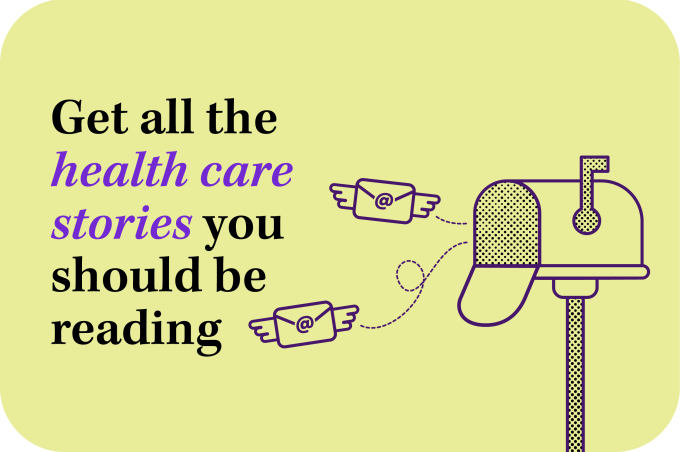Hospitalist Jason Hill, MD, said he should stop asking his patients “How are you doing today?” because he already knows how they will answer.
“They're going to say ‘bad’ every time, because no one wants to be there,” Dr. Hill, an innovation officer with Ochsner Health in New Orleans, said during a panel discussion at the HLTH health innovation conference in Las Vegas.
But, ever since Benjamin Franklin founded the Philadelphia Hospital in 1751, the nation’s health care focus has been on inpatient settings—that is, up until now, according to panel moderator Hal Paz, MD.
“There's been an explosion of innovations, new companies, solutions and technologies focused on keeping patients healthy at home,” said Dr. Paz, an operating partner at Khosla Ventures, an investment firm with a focus on health care and life-science innovation.
As a health system with its own health plan, or what Dr. Hill calls a “pay-vider,” he said Ochsner has “a lot of skin in the game in making sure that our patients stay home and healthy, rather than ending up in one of our hospitals.”
Ochsner Health is a member of the AMA Health System Program, which provides enterprise solutions to equip leadership, physicians and care teams with resources to help drive the future of medicine.
At-risk patients ID’d. What’s next?
Noting that “patient models often dictate how we deliver care,” Dr. Paz asked Dr. Hill about innovations that Ochsner Health has implemented in this area and the challenges it faced in doing so.
“Predictive modeling is something we've been doing at Ochsner for a number of years, and it helped us to understand about where we can mitigate potential bad things from happening,” Dr. Hill replied.
He added, however, that while these investments helped to concentrate resources on where they were most needed, identifying the patients who needed the most help was only the first step.
“One of the consequences of spending a lot of money on predictive models is you have to figure out a way to actually do the thing that prevents the thing you're trying to prevent,” Dr. Hill said.
“We've been challenged by our health care leadership” to figure out which patient population will need or benefit from a particular initiative, noting that then the challenge was to develop such programs and implement them across the Ochsner Health network.
Even with these challenges, “in our world, it's much better to prevent disease than to react to disease,” Dr. Hill said.
In the home-health environment, this can mean leveraging generative augmented intelligence (AI) to facilitate bidirectional conversations with patients or using wearables or other devices to deliver the wraparound services a patient may need.
Technology can help determine if a patient is getting weaker, if they are at greater risk for an injury-producing fall, or if follow-up care is needed to prevent or manage a chronic disease—all while ensuring patient safety and privacy, Dr. Hill said.
Eliminating stranger-based care
Home-health services require alignment among health plans, health care organizations and, especially, patients.
This alignment is particularly important because of what was termed the “stranger-stranger-stranger problem” by panelist Paymon Farazi. He is president of Signify Health, a technology and services company that brings health professionals into patients’ homes. His company was purchased by CVS Health in March 2023.
“A stranger, a Signify Health employee, calls a stranger, a [Signify Health] member, to let another stranger, the clinician, into their home,” Farazi said. “That’s a big hurdle.”
Farazi noted that Signify Health has gotten very good at navigating this situation, having done it 3 million times.
Dr. Hill, however, noted that having an existing primary-care relationship with the patient and alignment with the patient’s health plan—be it Ochsner Health’s plan or another insurance company—this situation can be avoided.
The key part is establishing communication “between payer and provider, and creating places where we can say, ‘You know what? We're not going to fight each other,’” he explained.
This engagement allows payers and health care organizations to collaborate on initiatives such as lowering hospital admissions.
“The hospital is expensive, and no one wants to be there,” Dr. Hill said.
Learn about monitoring chronic conditions outside of the traditional health care environment with the “AMA Remote Patient Monitoring Implementation Playbook.”
Create connections, solve problems
Dr. Paz cited a recent Centers for Medicare & Medicaid Services report evaluating home-based acute-care, or “hospital at home,” services. The study found that home services were less expensive than similar care delivered in a hospital, quality scores were higher for healthier patients, and satisfaction scores were positive—even among the sicker patients with more complex conditions.
Dr. Hill noted that Ochsner Health has been conducting its own in-house research on chronic care management of cardiometabolic disease using digital medicine programs and “app-based care” that produced similar findings.
This includes a pilot of the Ochsner Health Acute Care at Home program launched this March, which provided at-home services for eligible emergency department patients. By avoiding hospital admissions or stays in the observation unit, more than 1,000 bed-days were saved. Instead, patients were seen the same or next day at home by a virtual physician leading an in-home care team.
These findings, Dr. Hill said, led him to ask: “Are we trying to solve the right problems in medicine?” and if the nation’s health care system will “continue to double down on clinic-focused” services.
“We have to be able to create connections that establish a web where the primary care physician is in touch with their patient a lot of the times—but at the same time, only when they need to be,” he said.
The need for physician intervention is informed by the capability of an infrastructure that includes community services and payers working as partners with health professionals. Dr. Hill said creating and gelling such an infrastructure “is the primary problem we have to scale.”
“We should all be thinking about solving that problem,” he said, adding that patients’ smartphones and biometric apps are helping the process along.





